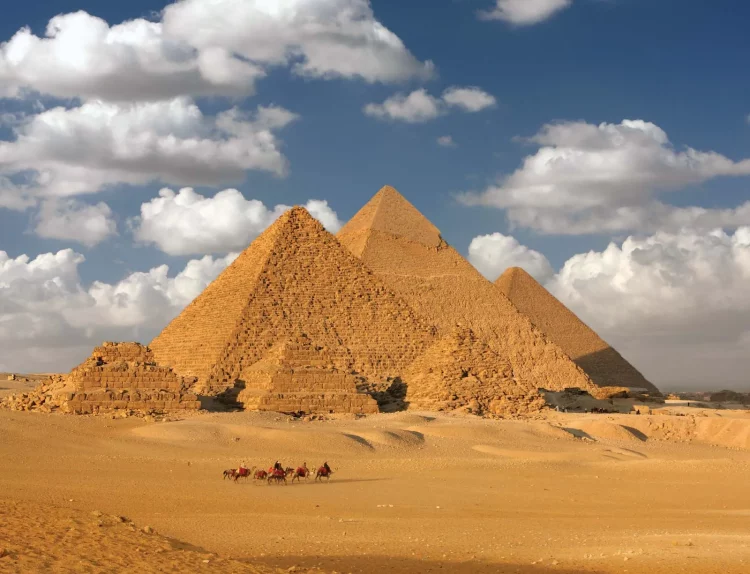Egypt is a land where the past and present exist in a mesmerizing dance. From its monumental pyramids to the mystical banks of the Nile, this ancient country is a traveler’s dream, offering a stunning blend of history, culture, and natural beauty. Whether you are an avid history buff or someone seeking to explore landscapes that seem frozen in time, Egypt holds something extraordinary for you. In this article, we explore the best way to uncover Egypt’s ancient wonders and its awe-inspiring natural beauty, guiding you on how to experience it all to the fullest.
Egypt’s Ancient History and Awe-Inspiring Natural Beauty
When we think of Egypt, what often comes to mind are the iconic Pyramids of Giza, the grand temples, and the magnificent Nile River. But what makes Egypt truly unique is how its rich historical and cultural legacy blends seamlessly with the dramatic beauty of its natural landscapes. With a fascinating mix of desert, river, and ancient architectural marvels, Egypt offers an experience that is both visually stunning and culturally enriching.
To explore Egypt’s ancient wonders and its breathtaking natural beauty, one must not only step back in time but also immerse themselves in the environment that has inspired countless civilizations. From the great pyramids to the serene shores of the Nile, each corner of this incredible country tells a story of human ingenuity and natural magnificence.
The Pyramids of Giza: Discovering the Ancient Wonders of Egypt
Without a doubt, the Pyramids of Giza are the most famous and awe-inspiring monuments in Egypt, attracting millions of visitors each year. These iconic structures, which have stood for over 4,500 years, are the last remaining of the original Seven Wonders of the Ancient World. However, the magic of the pyramids lies not just in their impressive size but in the sense of mystery and wonder they evoke.
The Great Pyramid of Giza, built for the Pharaoh Khufu, is the largest and most grandiose of the three pyramids. Standing at an original height of 146 meters (481 feet), it was the tallest man-made structure on earth for over 3,800 years. The precision with which these structures were built, using millions of limestone blocks, is a testament to the extraordinary engineering skills of ancient Egypt.
A visit to the pyramids is more than just a sight-seeing trip; it’s an opportunity to step into the past. You can explore the Pyramid of Khafre, which appears taller due to its elevated position, and the Pyramid of Menkaure, the smallest of the trio. Nearby, the Great Sphinx, a lion-headed statue with the face of a Pharaoh, stands watch over the pyramids, guarding the secrets of the ancient world.
For a truly immersive experience, consider taking a camel ride around the pyramids during the golden hour, when the sun casts its soft glow over the stones, creating a surreal atmosphere. You can also opt for a guided tour that delves deeper into the history, myths, and engineering feats behind these wonders. At night, the Sound and Light Show offers an evocative narrative of Egypt’s ancient civilization, blending lights and music with the timeless stones of Giza.
The Nile River: Cruise Along the Nile and Witness Egypt’s Stunning Desert Landscapes
The Nile River is undoubtedly the lifeblood of Egypt, and exploring it by cruise is one of the most scenic and relaxing ways to experience the country. Flowing for over 6,600 kilometers (4,100 miles), the Nile is the longest river in the world, serving as the cradle of Egyptian civilization. The banks of the Nile have witnessed the rise and fall of powerful dynasties, the building of grand monuments, and the creation of some of the world’s most celebrated works of art.
A Nile River cruise is a great way to see Egypt’s ancient treasures in a more leisurely manner, providing access to some of the country’s most significant historical sites. Many cruises run between Luxor and Aswan, a journey that takes travelers past temples, tombs, and picturesque landscapes.
Luxor is home to the Valley of the Kings, where the tombs of pharaohs such as Tutankhamun and Ramses the Great were uncovered. The stunning Karnak Temple and Luxor Temple are also must-see sites that are best appreciated with a cruise down the Nile. As you float along the river, you’ll pass lush palm groves, ancient villages, and sand dunes stretching endlessly into the desert.
Continuing south, the ancient city of Aswan offers a more relaxed atmosphere, with a rich Nubian culture that contrasts the more crowded spots in the north. The Philae Temple, dedicated to the goddess Isis, is a particular highlight, standing majestically on an island in the Nile.
Cruising along the Nile offers a chance to witness the spectacular desert landscapes that flank the river. The contrast between the lush, green riverbanks and the vast, arid deserts creates a stunning visual experience, evoking the timeless beauty of Egypt’s natural scenery.
Top Destinations: Where to Go for a Complete Egypt Experience, Combining History and Natural Wonders
To get the most out of your Egyptian adventure, it’s essential to explore both its ancient wonders and the magnificent natural beauty it has to offer. Here are the top destinations you should consider for a complete experience of both history and nature.
Cairo and Giza – The Heart of Ancient Egypt
No trip to Egypt is complete without visiting Cairo, the bustling capital and gateway to the ancient wonders of Giza. In addition to the pyramids, Cairo is home to the Egyptian Museum, which houses the treasures of King Tutankhamun, as well as countless artifacts that showcase the artistic and cultural heritage of ancient Egypt. From Cairo, you can easily take day trips to the Sphinx and the Pyramids of Giza, making it a perfect starting point for your adventure.

Luxor – The Open-Air Museum
Known as the world’s greatest open-air museum, Luxor is where the majority of Egypt’s ancient monuments can be found. The city is home to the Valley of the Kings, the Temple of Karnak, and the Luxor Temple, all of which are must-see sites. Luxor is also where the famous tomb of King Tutankhamun was discovered, making it an essential stop for history lovers.
Aswan – Natural Beauty and Ancient Nubian Culture
For those seeking tranquility and beauty, Aswan is a hidden gem. The city is located in the south of Egypt, near the border with Sudan, and is a gateway to Nubian culture and the stunning natural beauty of the Nile. Lake Nasser, one of the world’s largest artificial lakes, offers a serene backdrop for exploration, while the Abu Simbel Temples, built by Ramses II, are a jaw-dropping feat of engineering and art.
The Red Sea Coast – Egypt’s Natural Paradise
While Egypt is often thought of for its history and deserts, its Red Sea coastline offers a different kind of beauty. The resort town of Sharm El Sheikh and the Dahab region are perfect for those looking to explore Egypt’s underwater world. With its vibrant coral reefs, crystal-clear waters, and diverse marine life, the Red Sea is a haven for divers and snorkelers.
Siwa Oasis – Egypt’s Hidden Desert Paradise
For something truly off the beaten path, head to Siwa Oasis, located in Egypt’s western desert. This secluded spot is renowned for its natural beauty and historical significance. The Temple of the Oracle, where Alexander the Great once sought guidance, and the crystal-clear Salt Lakes offer unique insights into Egypt’s mystical side. Surrounded by vast sand dunes and ancient palm groves, Siwa Oasis offers a quiet retreat from the crowds.
Conclusion
Egypt is not just a destination; it’s a journey through time. The Pyramids of Giza, the eternal Nile, and the desert landscapes all speak to the genius of an ancient civilization that continues to captivate the world. By blending history with natural beauty, Egypt offers travelers an unforgettable experience that is both intellectually enriching and visually stunning. Whether you’re marveling at the awe-inspiring pyramids, cruising along the Nile, or exploring Egypt’s hidden oases, each moment spent in this incredible country will leave you with a deeper understanding of its ancient wonders and natural landscapes.





















